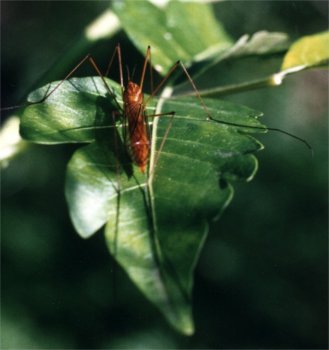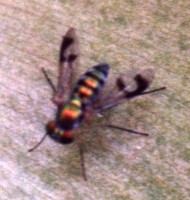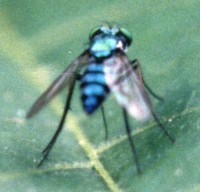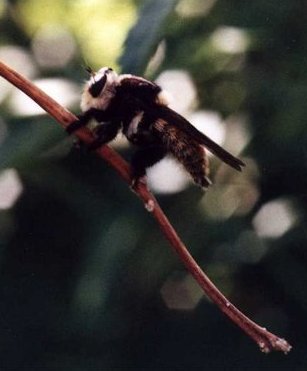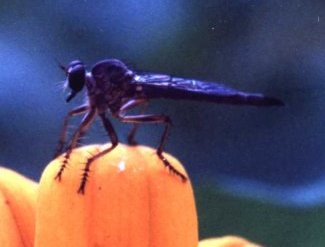Diptera
by Valerie (September 5, 2000)
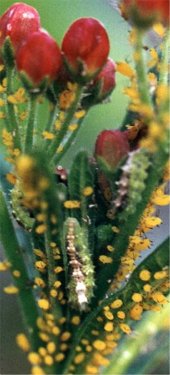
For those readers unfamiliar with taxonomic nomenclature, Diptera is the name of the order of insects containing flies, mosquitoes, gnats and midges. Characteristics include a three-part development after hatching (larva, pupa, adult) and one pair of wings. The second pair of wings has evolved into a pair of balancing organs called halteres. 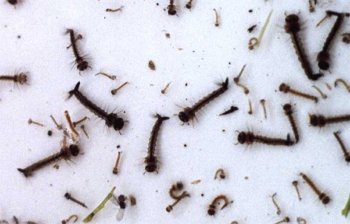
The first insects pictured are maggots. This is not the typical looking yucky white blow-fly or house fly maggot that is found in garbage and decaying flesh, but a predatory syrphid fly larva. Syrphid flies are also called flower or drone flies, and the adults of many species resemble bees. They are also called hover flies because of their very efficient aerial abilities. The maggot's main food is aphids, making them a valuable biological control. The larvae of this particular species are mostly green in color, with a white stripe down the back, and this photo shows three in the midst of a feast of yellow aphids on a butterflyweed plant. While on the subject of larvae, the next species is a mosquito. Both the larvae and the pupae are aquatic, and the adult females are the big problem because they drink blood. I often collect rainwater in buckets and allow the mosquitoes to reach a sizeable larval stage, then net them up and put them in the ponds to feed the fish, damselfly and dragonfly larvae that seem to always be running out of food. The mosquitoes grow by eating each other, in the absence of any other prey. While mosquito bites are not a major problem (unless you happen to be allergic to them), the diseases they can spread certainly are. In this area, dogs must be given preventative heartworm treatments year 'round, since the mosquitoes are active even in the winter. There are also numerous mosquito-borne diseases that can affect people as well.
The large, long-legged fly in the next illustration is a crane fly. They are harmless, but look like gigantic mosquitoes. However, they don't bite, and are simply a nuisance when they hatch out in large numbers and tend to get in the house. The tiny, brilliantly colored long-legged fly is a common sight in our gardens. They are predatory, but must prey on very tiny insects since they are only about 1/3 of an inch long. The iridescence of their bodies is striking, but they are so small that you have to get really close to see it.
Robber flies are top predators in their size range and often rest around flowers, waiting to catch bees or flies coming for nectar. There are two kinds that we frequently see. One is very fuzzy and looks somewhat like a bumblebee, while the other is more slender, smooth and dark.
The final fly pictured here is a biting fly such as a deer fly or horse fly. The metallic green iridescence of its large compound eyes is evident. Although in some parts of the U.S., these flies are a real nuisance during hot periods, around here there are relatively few of them, so we can go for walks without constantly swatting away swarms of them. Their bite (at least for me) is far worse in terms of swelling than that of the stings of wasps or bees, but it's probably variable for different people.
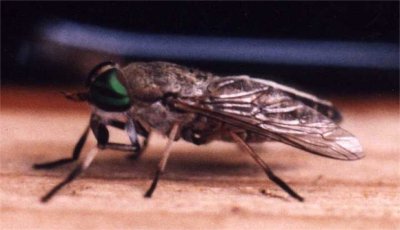 |
